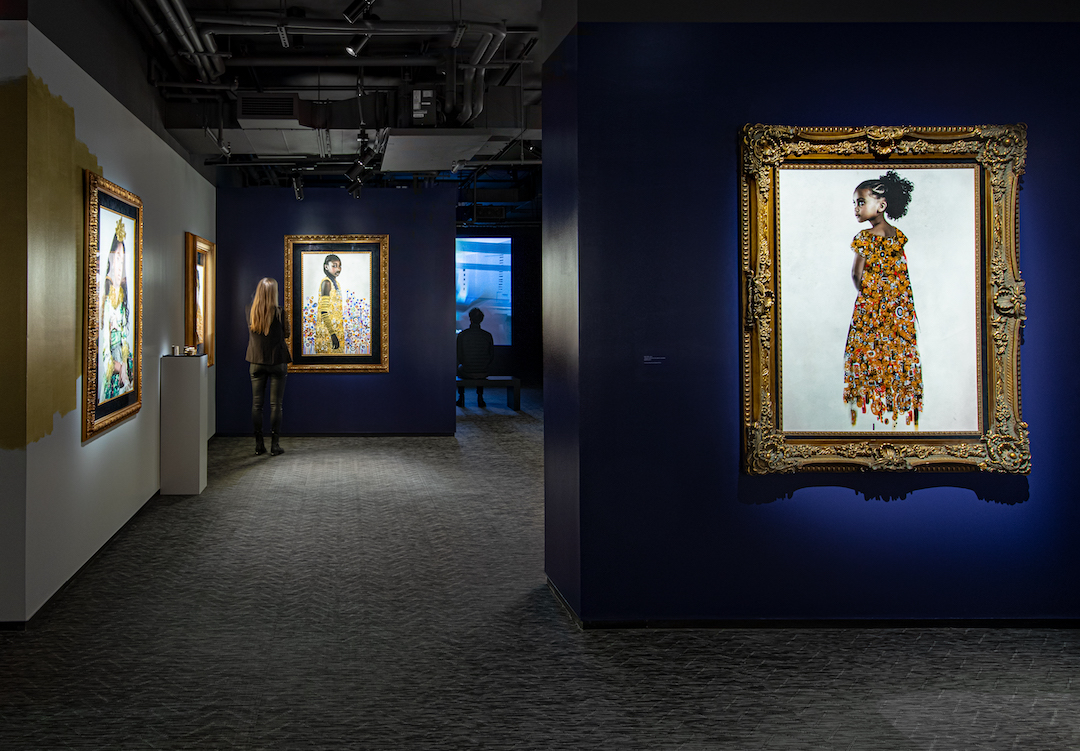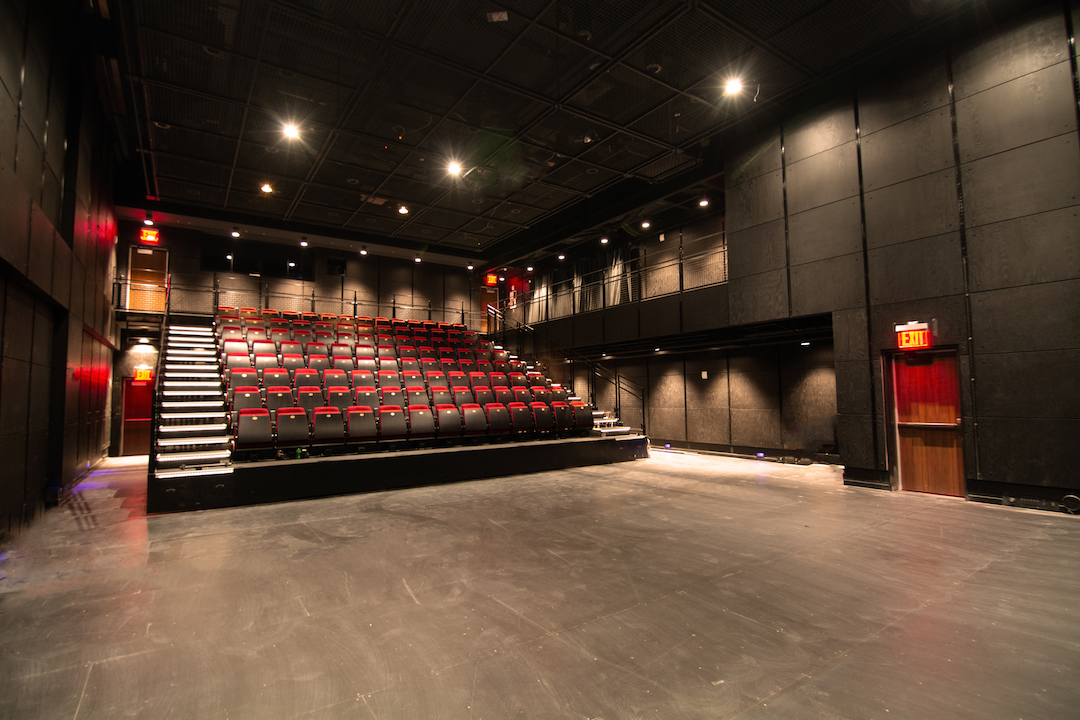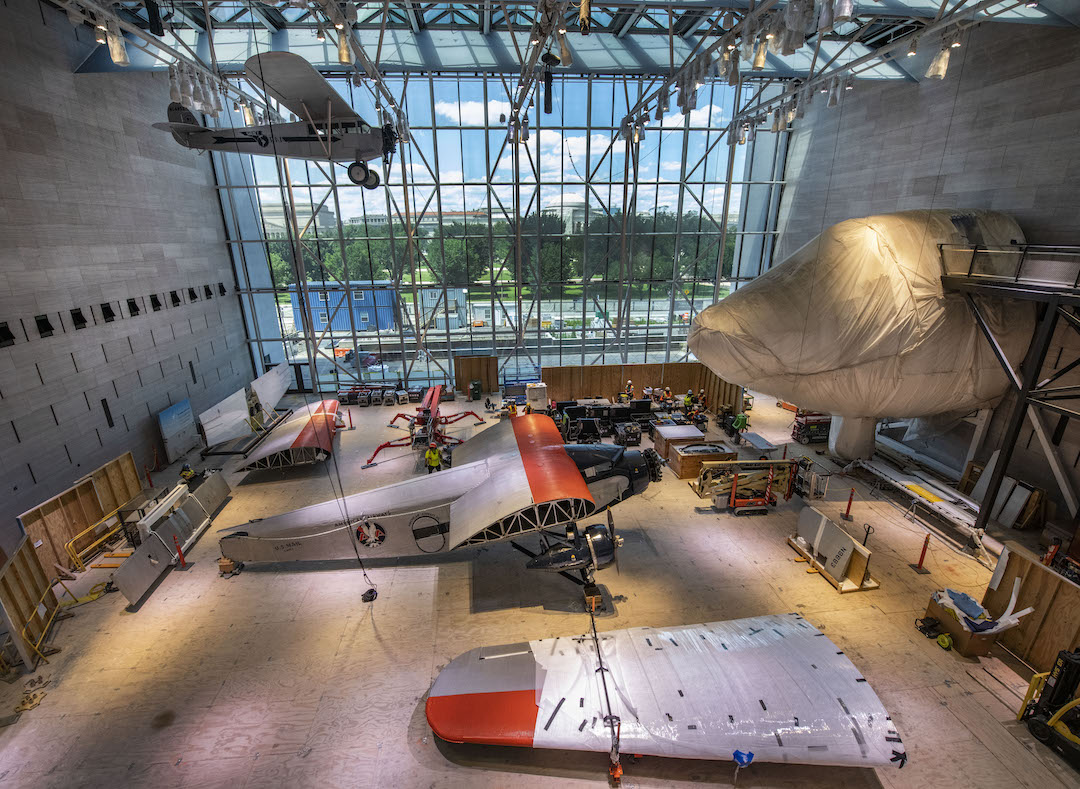One of Clark Construction Group’s cultural projects is the Orange County (Calif.) Museum of Art’s new three-story, 53,000-sf home for the Segerstrom Center for the Arts in Costa Mesa. Throughout the construction process for this $73 million project, Clark has facilitated tours for stakeholders and potential donors that recently included a breakfast on the jobsite.
Efforts like this to raise capital for cultural buildings became necessary during the COVID-19 health crisis. “For some cultural institutions, the pandemic has created a more challenging fundraising environment,” says Jared Oldroyd, Senior Vice President at Clark, who has been the executive in charge of several of the firm’s cultural contracts.
Oldroyd, like other AEC sources contacted for this article, have seen their cultural projects bounce back to life over the past 12 months. But the pandemic’s impact is likely to be longer-lasting when it comes to new construction and upgrading existing buildings to meet new air-quality and social-distancing norms.
For example, LeChase Construction is doing more with imaging technologies to communicate remotely with stakeholders, says its Vice President Lee Sommerman. That includes virtual real-time tours, increased use of drone imagery, and systems that upload images captured as a project team member walks the site.
As part of the OMA-led expansion of the New Museum in New York City, the architecture firm Cooper Robertson did extensive research into indoor air quality and visitor-staff circulation to ultimately determine that the building’s existing HVAC system met or exceeded guidelines set by the Centers for Disease Control and Prevention, says Erin Flynn, RA, LEED AP, Partner and Director of Architecture.

Flynn adds that another COVID-19 protocol now finds more cultural centers like museums enabling patrons to access information via their own mobile devices. Clark’s Oldroyd also sees a push by cultural centers toward interactive and immersive displays that incorporate more touchless elements, right down to the stylus that each visitor receives from the National Museum of the U.S. Army in Fort Belvoir, Va., one of the new constructions Clark completed in 2020.
Oldroyd points out that 75 percent of the overall exhibit area in the Museum of the Bible in Washington, D.C., features interactive and immersive experiences. To support such projects, his firm has been able to leverage the in-house expertise of its S2N Technology Group.
Fotografiska New York, a photography museum that’s an adaptive reuse of the 1894 Churches Mission House, creates a space for visitors to meet, eat, drink, and experience photography through an immersive series of rotating exhibits. Natural light was intentionally excluded from the gallery floors through the addition of interior walls, so that ambient light can provide a sense of intimacy with the artwork, explains Theresa M. Genovese, AIA, LEED AP, a Principal with CetraRuddy Architecture, which provided architecture and interior design services for this six-story, 45,000-sf project.
Genovese observes that, even before the COVID-19 outbreak and spread, some cultural institutions were investigating the so-called “distributed museum model,” which refers to pop-up or temporary exhibits or events that expand the reach of the facility and bring cultural programming to other physical or virtual spaces.
In that same vein, in markets where climate allows, some cultural institutions are blurring the boundaries between indoor and outdoor spaces. “Opaque boxes are giving way to transparency and connection to the external environment,” says David Herd, Managing Director of Buro Happold’s California Region.
RENOVATIONS IN DEMAND
AEC firms tell BD+C that they’ve seen renewed client interest for a variety of cultural and artistic venues. LeChase Construction has seen the greatest demand for performing arts centers. The firm, says Sommerman, was part of a $9.5 million historic renovation of the 32,336-sf Bent’s Opera House in Medina, N.Y. The renovation, designed by Kideney Architects, required extensive structural work on a three-story, 150-year-old building that had been vacant since 2010. The result is a mixed-use facility that, aside from the opera house on the third floor, includes a farm-to-table restaurant and a boutique hotel.
Renovations and expansions of cultural centers are also prevalent. Among Cooper Robertson’s recent cultural expansions are The Studio Museum of Harlem (designed in collaboration with Adjaye Associates), Albert-Knox Art Gallery in Buffalo, N.Y. (led by OMA), and the Rock & Roll Hall of Fame in Cleveland (led by PAU).
In Washington, D.C., a joint venture that includes Clark, Smoot, and Consigli has been leading the Smithsonian Institution’s largest renovation to date: the National Air & Space Museum revitalization, a multi-phase project that involves deconstructing the museum to its core structural elements, upgrading the structure to meet modern codes, and installing a stone-clad curtain wall, entrance canopy, MEP system, and finishes. Phase 1 should be completed by Spring 2022.
Pavarini McGovern, which is part of the STO Building Group, is nearing completion of the Davis Brody Bond-designed Irish Arts Center (IAC), a five-story expansion of what had been a former tire garage in New York’s Hell’s Kitchen neighborhood that adjoined the tenement building IAC had occupied since 1972. The new building requires a complex MEP system whose energy optimization “is a testament to the design,” says Mark Hildreth, Pavarini McGovern’s Project Manager.

Several sources confirm that their cultural clients are seeking energy efficient solutions for their projects. Shawmut Design and Construction’s recent completion of the Philip Roth Personal Library at Newark (N.J.) Public Library, designed with Ann Beha Architects and C&G Partners, added new MEP and fire protection systems as well as humidity and temperature controls. This 8,860-sf project also features a new HVAC system for Centennial Hall, the building’s lecture hall and event space.
Studio Ma’s recent cultural projects include the Museum of the West in Scottsdale, Ariz., whose tilt-up construction and flexible floor plan helped reduce its overall cost to half that of similar buildings. Passive design principles, such as self-shading the building from sun and heat gain by use of overhanging metal scrims on the second floor, lower the museum’s energy costs by 38 percent compared to peer buildings, says Christiana Moss, FAIA, Studio Ma’s Co-founder and Principal. The building recycles water for humidification, and condensate is diverted to a runnel that connects to a bioswale that can also handle up to 42 gallons per hour of roof rain runoff. These sustainability measures allow the museum to operate with only 45 percent of the water used by peer facilities.
Connecting the cultural building to its community is also an essential, and provides more opportunities for outdoor programming, says Flynn of Cooper Robertson. In Arizona, Studio Ma’s design of the Native American Cultural Center is informed by an Indigenous Planning Process that involved representatives from 22 Arizona tribal communities.
Related Stories
| Aug 11, 2010
Portland Cement Association offers blast resistant design guide for reinforced concrete structures
Developed for designers and engineers, "Blast Resistant Design Guide for Reinforced Concrete Structures" provides a practical treatment of the design of cast-in-place reinforced concrete structures to resist the effects of blast loads. It explains the principles of blast-resistant design, and how to determine the kind and degree of resistance a structure needs as well as how to specify the required materials and details.
| Aug 11, 2010
Jacobs, CH2M Hill, AECOM top BD+C's ranking of the 75 largest federal government design firms
A ranking of the Top 75 Federal Government Design Firms based on Building Design+Construction's 2009 Giants 300 survey. For more Giants 300 rankings, visit http://www.BDCnetwork.com/Giants
| Aug 11, 2010
Manhattan's Pier 57 to be transformed into cultural center, small business incubator, and public park as part of $210 million redevelopment plan
LOT-EK, Beyer Blinder Belle, and West 8 have been selected as the design team for Hudson River Park’s Pier 57 at 15th Street and the Hudson River as part of the development group led by New York-based real estate developer YoungWoo & Associates. The 375,000 square foot vacant, former passenger ship terminal will be transformed into a cultural center, small business incubator, and public park, including a rooftop venue for the Tribeca Film Festival.
| Aug 11, 2010
Gensler, HOK, HDR among the nation's leading reconstruction design firms, according to BD+C's Giants 300 report
A ranking of the Top 100 Reconstruction Design Firms based on Building Design+Construction's 2009 Giants 300 survey. For more Giants 300 rankings, visit http://www.BDCnetwork.com/Giants
| Aug 11, 2010
Bowdoin College Museum of Art
Brunswick, Maine
Since its founding in 1794, when what is now the state of Maine was still part of the Commonwealth of Massachusetts, Bowdoin College has played a pivotal role in the educational and cultural life of Maine. Contributing to that role for more than a century has been the Walker Art Building, an 1894 McKim, Mead & White-designed structure and home to the college’s Museum of Art.
| Aug 11, 2010
Gensler among eight teams named finalists in 'classroom of the future' design competition
Eight teams were recognized today as finalists of the 2009 Open Architecture Challenge: Classroom. Finalists submitted designs ranging from an outdoor classroom for children in inner-city Chicago, learning spaces for the children of salt pan workers in India, safe spaces for youth in Bogota, Colombia and a bamboo classroom in the Himalayan mountains.
| Aug 11, 2010
ASHRAE introduces building energy label prototype
Most of us know the fuel efficiency of our cars, but what about our buildings? ASHRAE is working to change that, moving one step closer today to introducing its building energy labeling program with release of a prototype label at its 2009 Annual Conference in Louisville, Ky.
| Aug 11, 2010
Thom Mayne unveils 'floating cube' design for the Perot Museum of Nature and Science in Dallas
Calling it a “living educational tool featuring architecture inspired by nature and science,” Pritzker Prize Laureate Thom Mayne and leaders from the Museum of Nature & Science unveiled the schematic designs and building model for the Perot Museum of Nature & Science at Victory Park. Groundbreaking on the approximately $185 million project will be held later this fall, and the Museum is expected to open by early 2013.
| Aug 11, 2010
Theater Renovation—A First-Class Production
In 1985, the city of San Diego ordered the historic Balboa Theatre, its beleaguered performing arts center, to be shuttered due to seismic safety concerns. It would take another two decades to restore the landmark building.







